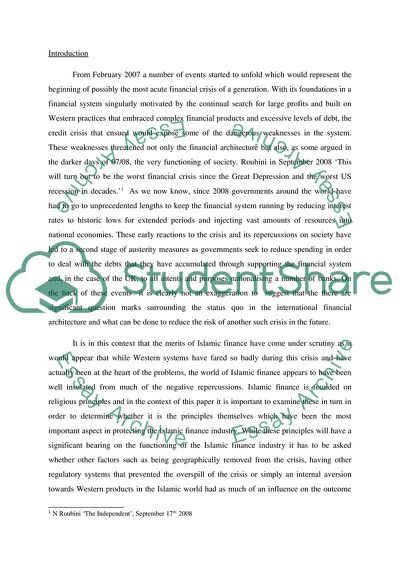Cite this document
(The Principles of Islamic Finance: the Primary Source of Global Research Paper, n.d.)
The Principles of Islamic Finance: the Primary Source of Global Research Paper. Retrieved from https://studentshare.org/finance-accounting/1747411-islamic-scholars-and-professionals-claim-that-the-islamic-finance-industry-was-partially-protected-from-the-current-financial-crises-due-to-its-principles-discuss
The Principles of Islamic Finance: the Primary Source of Global Research Paper. Retrieved from https://studentshare.org/finance-accounting/1747411-islamic-scholars-and-professionals-claim-that-the-islamic-finance-industry-was-partially-protected-from-the-current-financial-crises-due-to-its-principles-discuss
(The Principles of Islamic Finance: The Primary Source of Global Research Paper)
The Principles of Islamic Finance: The Primary Source of Global Research Paper. https://studentshare.org/finance-accounting/1747411-islamic-scholars-and-professionals-claim-that-the-islamic-finance-industry-was-partially-protected-from-the-current-financial-crises-due-to-its-principles-discuss.
The Principles of Islamic Finance: The Primary Source of Global Research Paper. https://studentshare.org/finance-accounting/1747411-islamic-scholars-and-professionals-claim-that-the-islamic-finance-industry-was-partially-protected-from-the-current-financial-crises-due-to-its-principles-discuss.
“The Principles of Islamic Finance: The Primary Source of Global Research Paper”, n.d. https://studentshare.org/finance-accounting/1747411-islamic-scholars-and-professionals-claim-that-the-islamic-finance-industry-was-partially-protected-from-the-current-financial-crises-due-to-its-principles-discuss.


